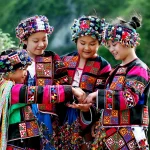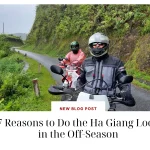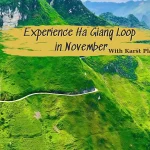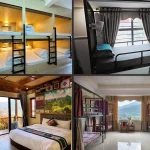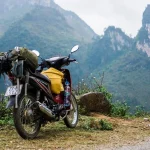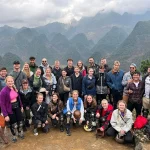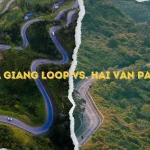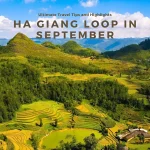Embark on an unforgettable journey through the Ha Giang Loop tour and immerse yourself in the rich cultural tapestry of Vietnam’s northern highlands. The Ha Giang Loop, renowned for its breathtaking landscapes and diverse ethnic communities, offers a unique opportunity to explore some of the most enchanting ethnic villages in Vietnam. In this article, join Karst Plateau to explore the 6 best ethnic villages in Ha Giang Loop to admire the cultural and natural wonders of the area fully.
1. Nam Dam Village (Dao Ethnic Group)
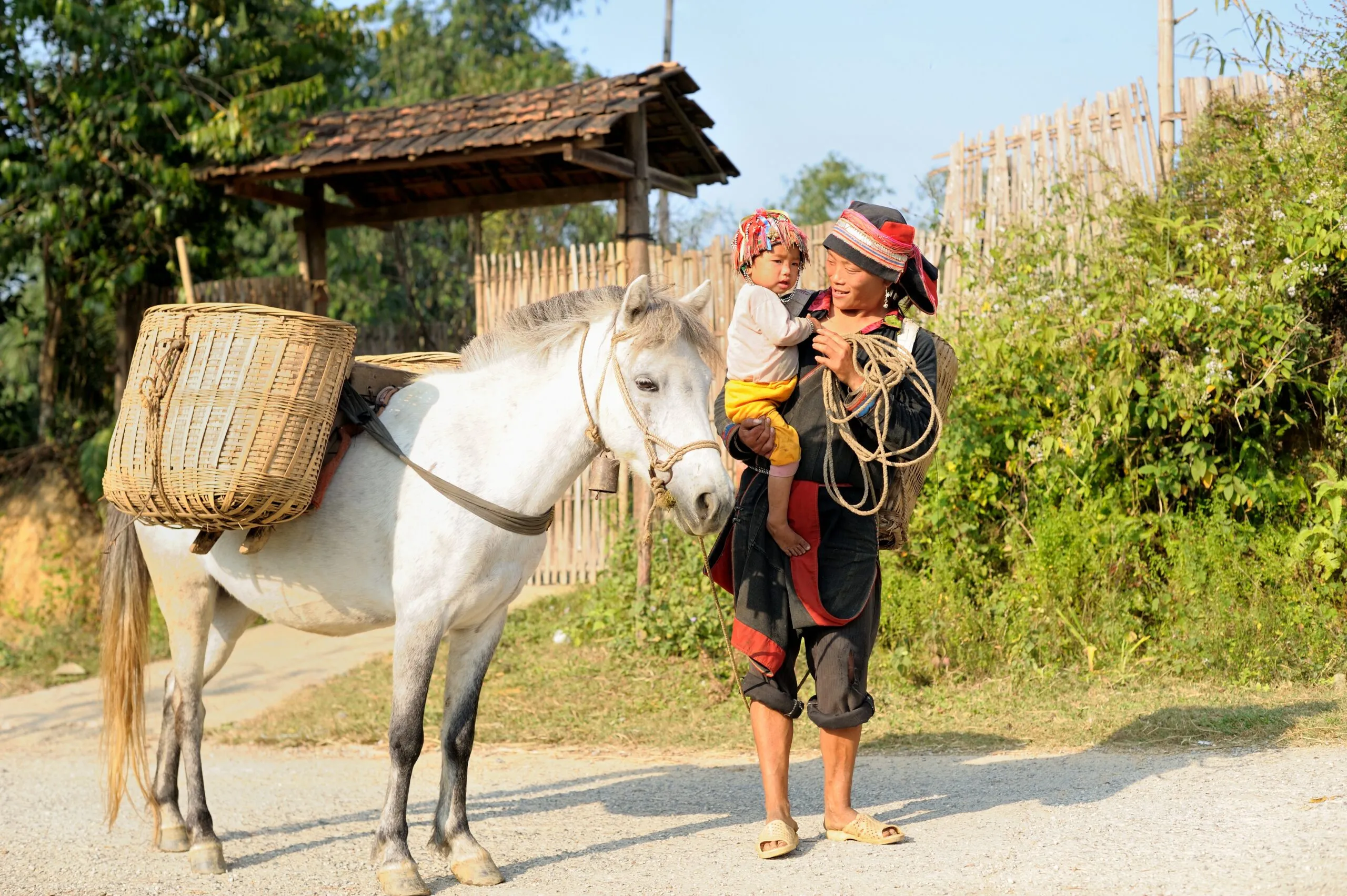
Nam Dam Village is predominantly inhabited by the Dao ethnic group
Unique Herbal Bath Experiences
One of the standout features of Nam Dam Village is its herbal bath, a unique tradition that signifies both relaxation and cultural significance. The bath uses a myriad of local plants and herbs that are known for their therapeutic properties.
This tradition not only provides visitors with an incredible experience of relaxation but also serves as a gateway to connect with nature.
Traditional Tay Architecture
Tay traditional architecture is characterized by stilt houses that are both functional and aesthetically pleasing. Constructed using natural materials such as wood and bamboo, these elevated houses offer protection against flooding and pests while allowing for natural ventilation. The roofs, often thatched with palm leaves, contribute to the rustic elegance of Tay villages.
Festivals and Customs in Tay Villages
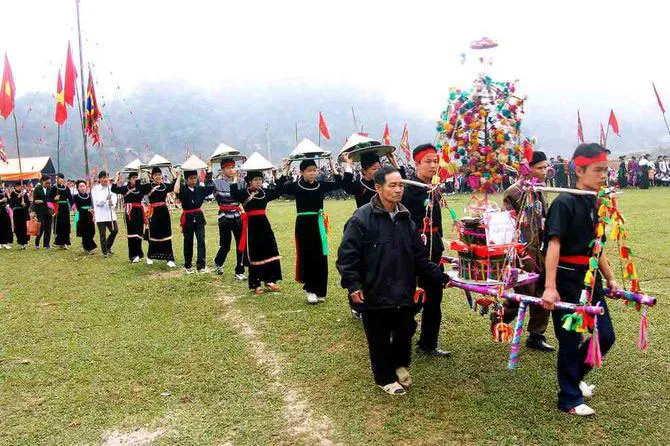
Long Tong Festival, which marks the welcoming of spring and praying for a bountiful harvest
2. Lung Tam Village (Hmong Ethnic Group)
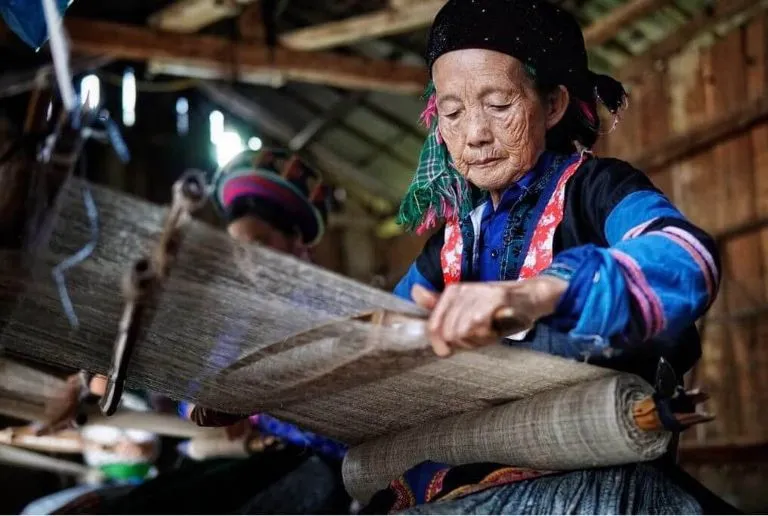
This Hmong village, situated in the Quan Ba district, is a hub for traditional brocade weaving
Traditional Hemp Fabric Weaving
Hemp weaving in Lung Tam is an elaborate process, that showcases the skills of the Hmong women who dedicate countless hours to this laborious craft.
Culinary Delights of Lung Tam
The culinary scene in Lung Tam is equally enchanting, reflecting the agricultural lifestyle of the Hmong people. Dishes are often made from fresh, locally sourced ingredients, focusing on herbs, vegetables, and traditional cooking methods. One iconic dish to try is Thang Co, a savory stew made primarily with horse meat, which is not only a culinary delight but carries rich historical significance within the Hmong culture.
Another staple is sticky rice, a sticky rice dish traditionally served during communal gatherings, symbolizing the Hmong values of family and sharing.
Hmong Cultural Festivals
Hmong villages host several vibrant festivals that are essential to their cultural practices. The Hmong Pao Festival celebrated during the Lunar New Year, showcases colorful attire, traditional music, and ceremonies honoring ancestors. Activities include local delicacies, traditional games, and folk performances, creating a joyous atmosphere that binds the community together.
Another significant event is the Khau Vai Love Market Festival, where young people from different communities gather to celebrate love and traditional ties. The festival is characterized by vibrant displays of traditional attire, singing competitions, and the exchange of local crafts, fostering camaraderie while setting the stage for budding romances.
3. Pho Bang Village
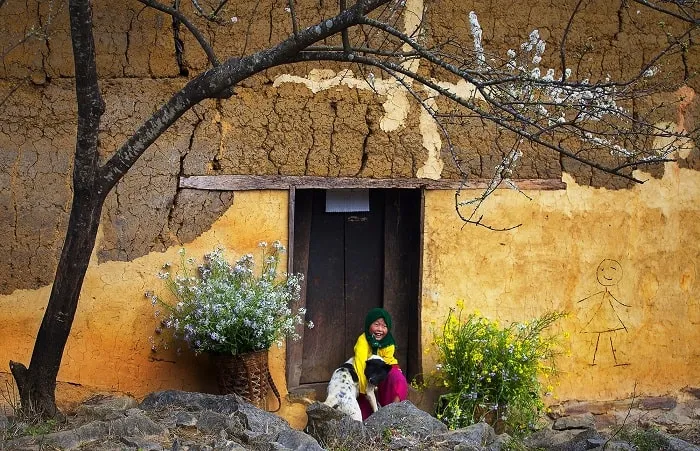
Pho Bang Village is a historic village that has preserved much of its traditional architecture and culture
Historical Architecture and Heritage
Visitors walking through the narrow alleys lined with ancient houses is akin to stepping back in time, as each residence displays intricate wooden carvings and traditional Dao design elements that highlight their architectural heritage.
Local Market Experiences
The local market in Pho Bang, one of the 6 best ethnic villages in Ha Giang Loop, serves as a vibrant hub for the community, pulsating with life and commerce. A visit to the market is an exhilarating experience, where the air is filled with the aromas of fresh produce, spices, and local delicacies. Travelers can explore a plethora of stalls, each showcasing handmade crafts, fresh local ingredients, and traditional foods. Engaging with local vendors provides insight into the Dao way of life and the economic dynamics within the village.
4. Lo Lo Ethnic Village
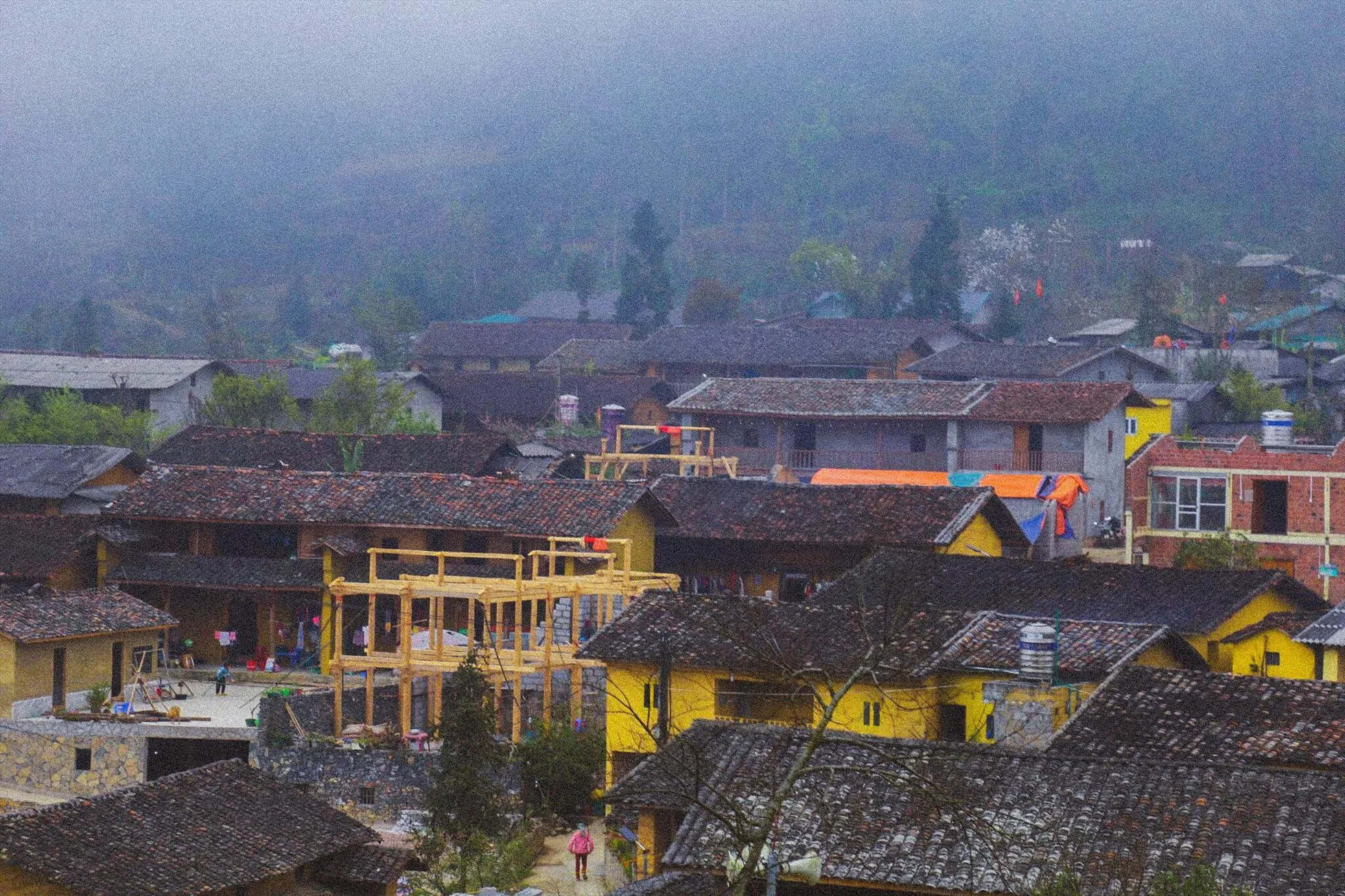
The village enchants with its ancient clay houses, stone fences, and flower-filled landscapes that vary by season
Unique Traditions of the Lo Lo People
The customs and cultural practices of the Lo Lo people are deeply rooted in their history and environment. They celebrate various festivals throughout the year, each highlighting aspects of their life and beliefs. One significant festival is their New Year Festival, during which lively traditional dances and colorful handwoven costumes symbolize their identity and culture.
Another important event is the Festival of Love, where young people express and celebrate romantic connections, fostering community bonds. Spiritual beliefs play a crucial role in their traditions, with many Lo Lo practicing animism and ancestor worship through rituals and offerings to deities and ancestors.
Lo Lo Cuisine and Local Dishes
The cuisine of the Lo Lo people is characterized by local ingredients reflecting their agricultural lifestyle
Noteworthy dishes include:
Thang Co: A traditional horse meat soup often served during special occasions and festivals.
Au Tau Porridge: A hearty dish made with black beans, showcasing local agricultural practices.
Various dishes are made from buckwheat, which they use in soups, cakes, and pancakes.
Herbs like coriander and basil enhance flavor, while communal dining fosters a strong sense of community, as meals are often shared among villagers.
Craftsmanship and Art in Lo Lo Villages
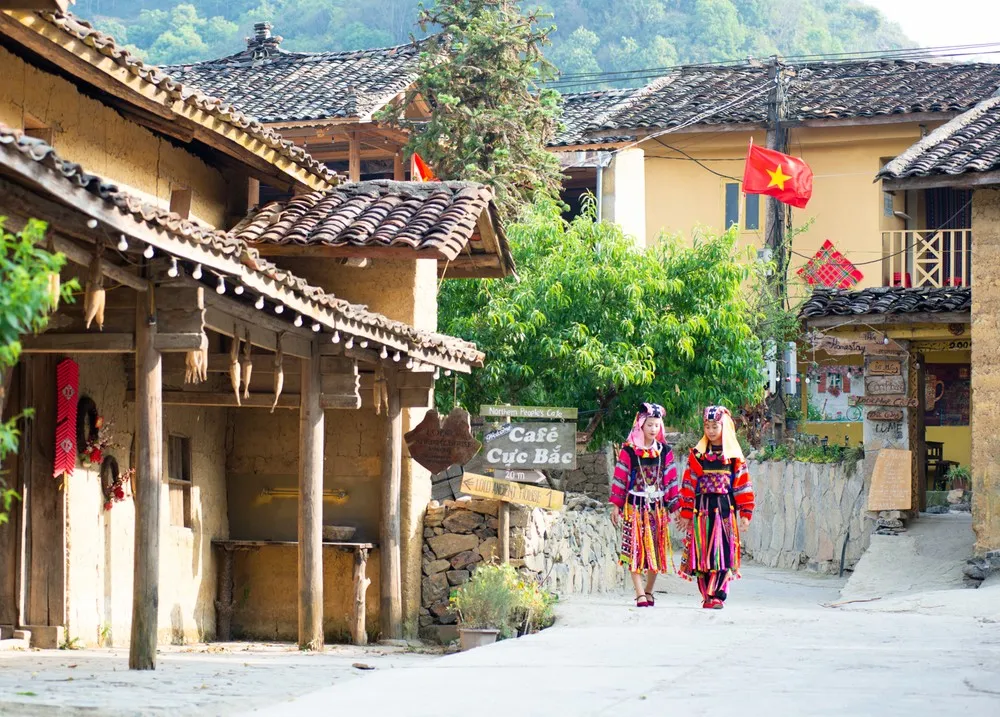
The Lo Lo people are known for their vibrant craftsmanship, especially in textiles and clothing
5. Yen Minh Village
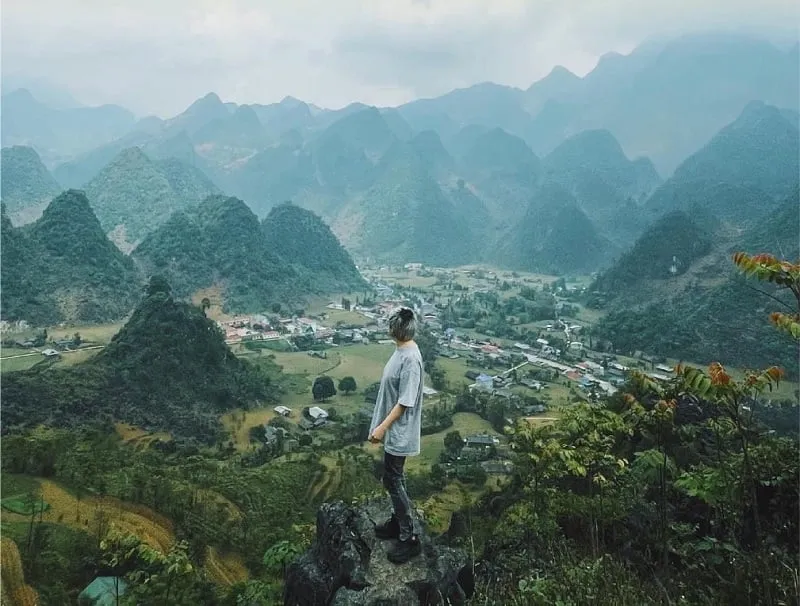
Not only is Yen Minh known for its scenic landscapes, but it also stands out for the interplay of cultures that contribute to a vibrant community experience
Scenic Landscape and Photography Spots
Yen Minh Village is renowned for its breathtaking landscapes, offering countless opportunities to capture stunning photography. The village is nestled amidst dramatic mountain scenery, featuring terraced rice fields that create vivid colors throughout the growing and harvest seasons.
Terraced Rice Fields: In particular, the terraced rice fields, especially during the vibrant green planting phase and golden hues of harvest, present breathtaking photographic opportunities that celebrate the natural beauty of the landscape.
Dong Van Karst Plateau Geopark: Recognized as a UNESCO Global Geopark, this geological wonder features striking limestone mountains, deep canyons, and expansive valleys perfect for landscape photography enthusiasts seeking to capture the essence of Northern Vietnam.
Quan Ba Heaven Gate: A short trip from Yen Minh leads to this remarkable viewpoint offering panoramic views of the twin mountains known as the Fairy Bosom, surrounded by breathtaking valleys. The vista transforms with the light of dawn and dusk, making it ideal for dramatic photography.
Local Markets: The colorful markets in Yen Minh come alive with the vibrancy of local culture. Photo opportunities abound as travelers can capture the dynamic scenes of ethnic diversity from vendors showcasing traditional dress, local produce, and artisan crafts.
Signature Dishes in Yen Minh
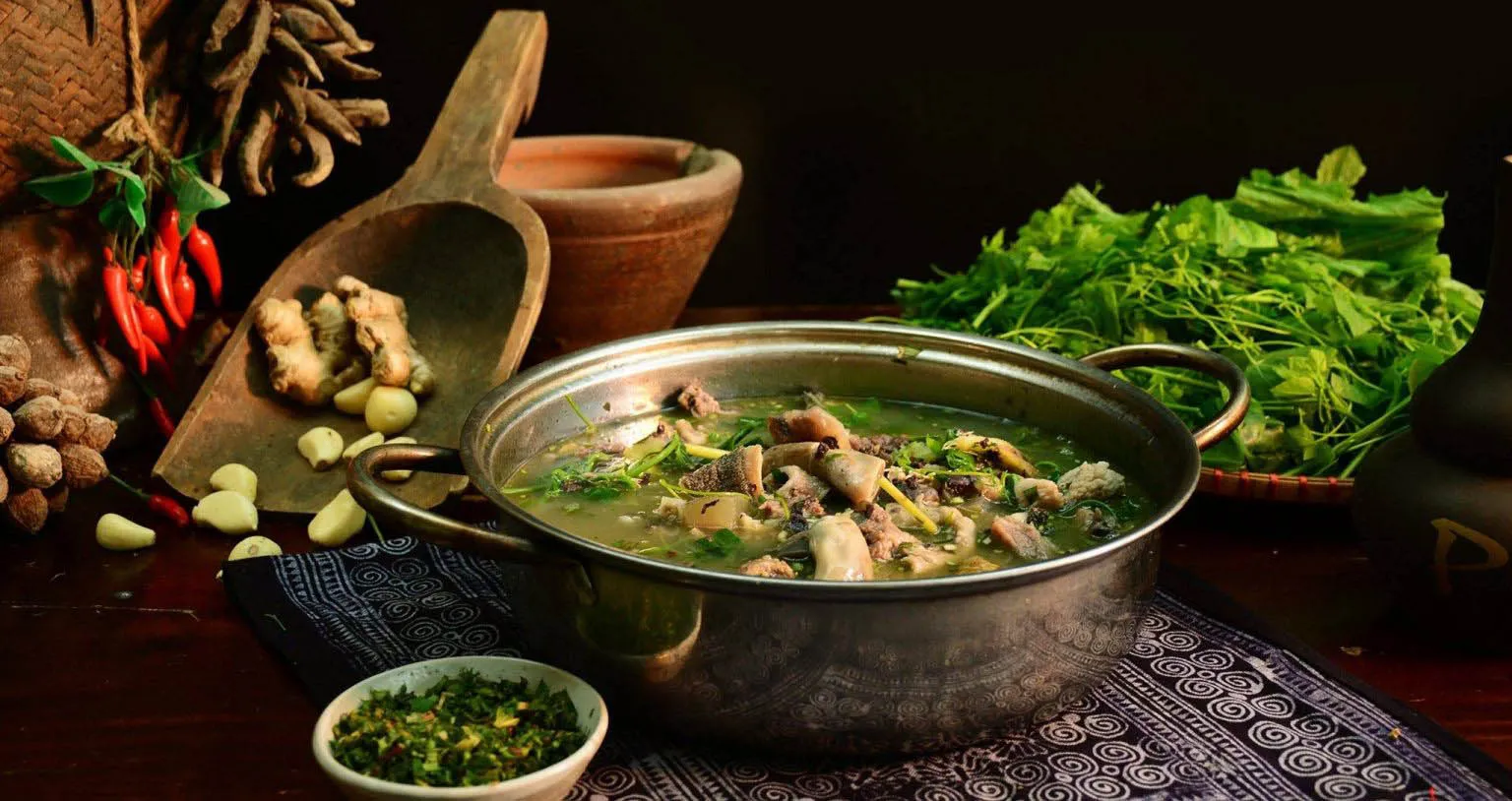
Thang Co is a dish that you must try when coming to Ha Giang.
Men Men: A staple dish made from corn is part of Hmong cuisine, highlighting local agricultural products and their significance in daily diets.
Au Tau Porridge: Made from Au Tau tubers that thrive in high mountainous areas, this dish is celebrated for its medicinal properties and is cherished among locals.
Buckwheat Cake: A traditional sweet treat made from dried buckwheat seeds, particularly popular during the autumn buckwheat flowering season, enabling visitors to soak in picturesque landscapes while enjoying flavorful bites.
Thang Co: Hmong’s traditional soup comprising horse meat, reflects the agricultural practices and culinary roots intrinsic to local cuisine.
Yen Minh Rice Rolls: These uniquely prepared rolls served with a rich broth represent the region’s culinary creativity, offering a delightful experience for food enthusiasts.
6. Du Gia Village
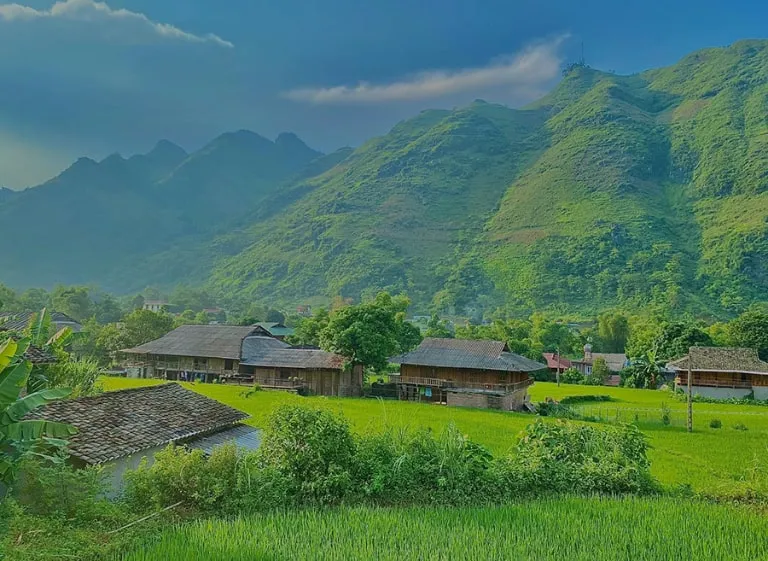
. This village, less crowded than others in Ha Giang, embodies the essence of rural life, offering travelers an authentic experience deeply immersed in nature and local customs.
Nung Ethnic Customs and Lifestyle
The Nung people are known for their unique cultural traditions, which influence their daily lives. Constructed primarily from wood, the stilt houses are distinctively designed and adapted to the local climate and environment.
Furthermore, handicrafts including weaving and traditional embroidery play an essential role in the Nung lifestyle, with many showcasing their artistry through drapery and home decorations.
Nature Trails and Hiking Opportunities
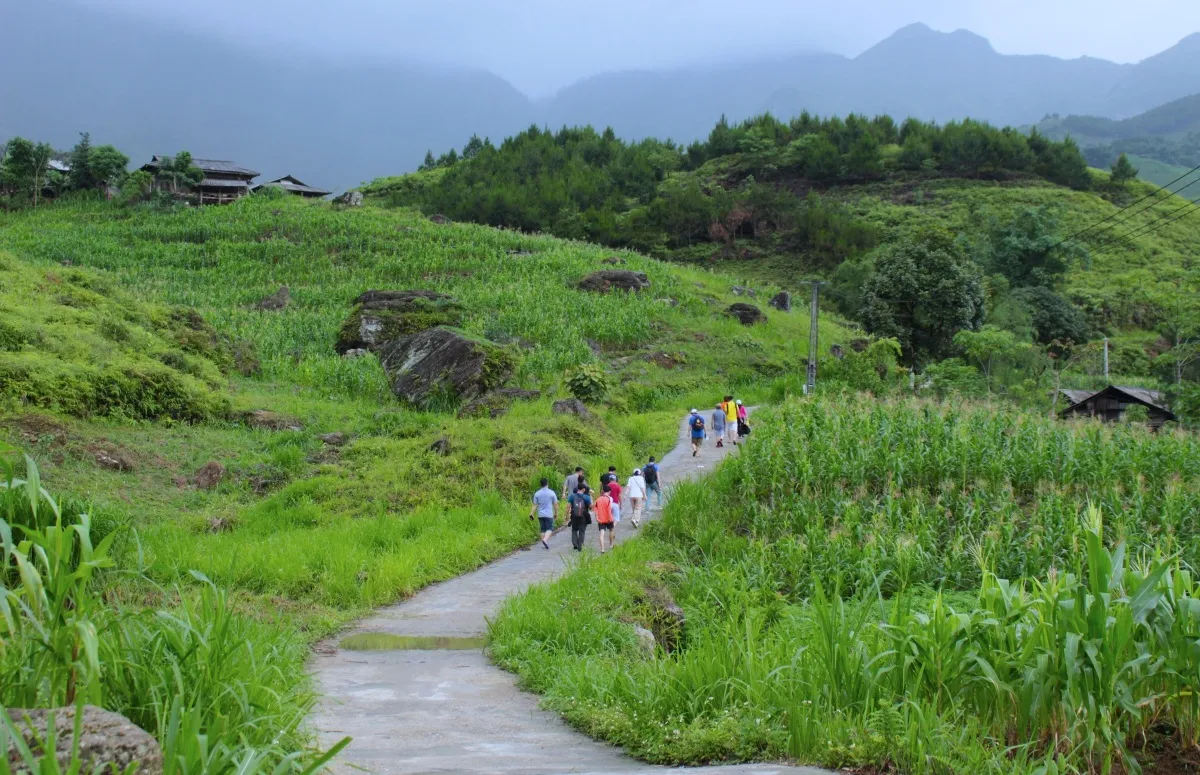
This place becomes an ideal place for nature lovers and hiking enthusiasts
Offering varying levels of difficulty, the hiking trails cater to both casual walkers and seasoned trekkers. A popular route leads to the Nho Que River, where explorers can navigate the serene valleys and delight in the untouched beauty of the landscape.
Gastronomic Experience of Du Gia
The culinary offerings in Du Gia encompass the rich traditions of the Nung ethnic group, heavily reliant on local produce. Dishes may include freshly harvested rice paired with vibrant vegetables and local meats, highlighting the unique culinary practices prevalent in the area.
Among the local specialties, the Thang Co soup is particularly popular, made with various meats and herbs, showcasing the distinct flavors that celebrate Nung’s agricultural heritage.
Traditional Music and Dance
The performances often occur during festivals, bringing the community together in celebration and entertainment. Visitors are frequently invited to participate in these joyful gatherings, engaging in traditional songs and dances, and forging meaningful connections that transcend cultural barriers.
In conclusion, exploring the 6 best ethnic villages in Ha Giang Loop offers a unique opportunity to immerse yourself in the rich cultural tapestry and breathtaking landscapes of northern Vietnam. Each village provides a distinctive glimpse into the traditional lifestyles and vibrant customs of the local ethnic communities. Whether you’re wandering through the terraced fields of Hoang Su Phi or marveling at the intricate weaving techniques in Lung Tam, the Ha Giang Loop promises an unforgettable adventure. For more travel tips and detailed guides on these remarkable destinations, visit Karst Plateau.
